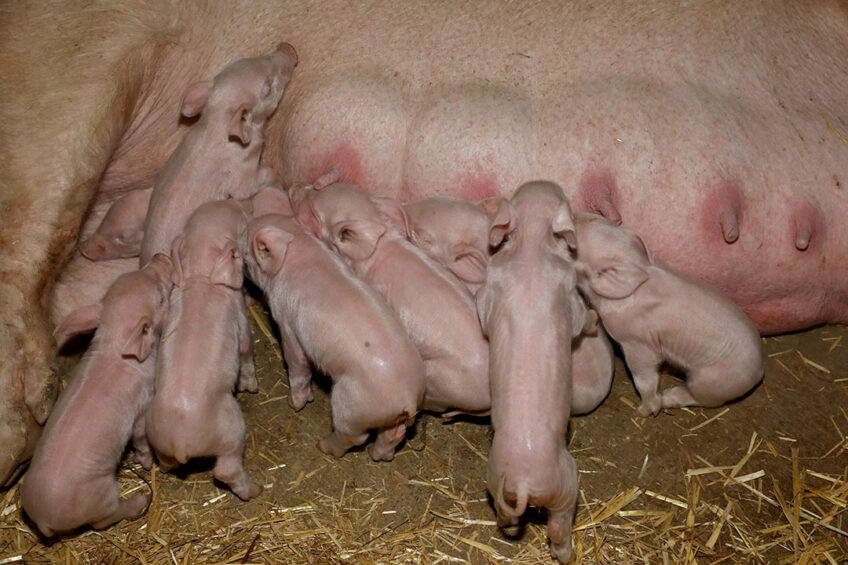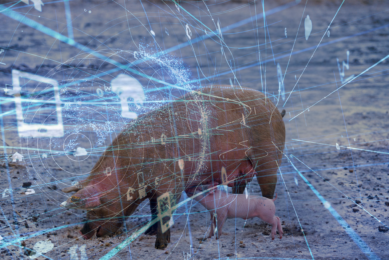Parity impacts maternal behaviour of sows

A focus on sow maternal behaviour is necessary to improve the survival rate and welfare of piglets. Factors such as previous experience, age, dominance, and interindividual variability based on genetic differences impact the sows’ maternal behaviour. An increase in experience improves maternal performance.
Those areas were highlighted as key in an article by researchers from the College of Animal Science and Technology, Hebei Agricultural University, China, and the College of Veterinary Medicine, Yunnan Agricultural University, China dating from 2023 in the Journal of Livestock Science.
Comparing primiparous sows with multiparous sows
Swine breeding is primarily focused on increasing productivity and improving litter size, which leads to higher piglet mortality pre-weaning. According to the National Animal Health Monitoring System of the United States pre-weaning mortality due to maternal crushing accounts for 47% to 54.5% of the total mortality rate. This study compared the primiparous sows with multiparous sows in terms of posture, postural change, nursing behaviour, sow-piglet interaction during lactation, litter weight, and the number of crushed piglets.
Data collection and data recording
In this study 106 large white sows from parity 2 and parity 3 but from the same farrowing group were selected. No nesting material was provided, the sows and their piglets had continuous access to water and a commercial lactation diet, and the piglets were weaned at the age of 21-28 days. All maternal behaviour was collected through on-farm live observations and video recording for 3 weeks post-farrowing. The litter weight at birth, and at 1st, 2nd, and 3rd week of age, the number of piglets born alive, the number weaned, piglet mortality, and crushed piglets were recorded, as well.
Behavioural changes in primiparous versus multiparous sows
Multiparous sows spent more time with lateral lying compared to primiparous sows. However, primiparous sows spent more time standing or pacing. The frequency of postural change was not different between parities. Parity significantly affects the frequency of successful nursing; thus, primiparous piglets demonstrate successful nursing more often than the multiparous piglets.
Parity impacts the carefulness score from standing to lying but it has no influence on the sow-piglet communication or the maternal defensive behaviour and the score of people approach. Increased litter weight is associated with the higher proportion of piglets’ nursing initiation in multiparous sows. On the other hand, increased litter wight is linked with lower frequency of sitting to lying in primiparous sows. Factors such as lateral lying, ventral lying, nursing terminated by the sow, and nursing terminated by the piglets impact the number of crushed piglets in primiparous sows.
The importance of behavioural patterns for piglet survival
Multiparous sows showed good maternal behaviour in the time spent in a particular posture, nursing willingness, carefulness before standing to lying, and response to piglets’ call for help. Litter weight and the number of crushed piglets were not affected by variation in maternal behaviour between primiparous and multiparous sows.
Lateral lying post-farrowing provides nutrition and a warmer environment for the piglets, and it decreases the risk of the piglets being crushed. Multiparous sows show more behavioural adaptation caused by the maternal experience mainly in response to lateral lying compared with primiparous sows. Ventral lying and lateral lying to others are the signs of sow refusal to nurse the piglets, and both indicators gradually increase in the lactation period.
Furthermore, the frequency of lateral lying to others and the time spent in ventral lying are associated with the crushing of the piglets in primiparous sows. It must be considered that the increase in parity affects the lying duration due to the limb and hoof problem and the larger bodyweight. As piglets grow, there is a decrease in the initiated nursing by the sows and an increase in the nursing termination by the sow by changing postures which might be a risk to piglet mortality. Moreover, sows with a high communication score have almost 37% lower mortality and 15% more piglet weaning.
More experience, better maternal behaviour
In the conclusion the researchers wrote that “the finding of this study revealed the effect of the experience of the sow on maternal behaviour. Future studies are warranted to attain better knowledge about the maternal behaviour of sows, and ultimately improve the survival rate and welfare of piglets.”
The article in the Journal of Livestock Science was authored by Shang Li, Chunlian Lu, Mengyu Jia, Zijie Zhang, Hao Zhang, Zhifang Song, Shaohua Feng, and Hongzhan Cao of the College of Animal Science and Technology, Hebei Agricultural University, China, and Yijie Liu of the College of Veterinary Medicine, Yunnan Agricultural University, China.











